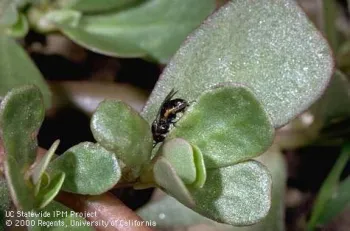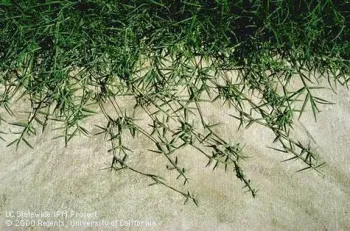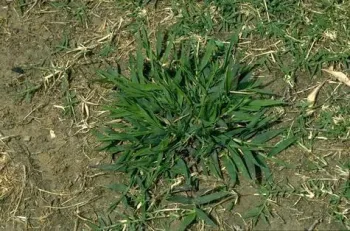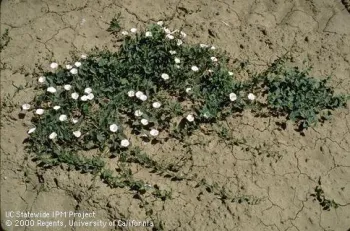By Kerry Lozito
Inyo-Mono Master Gardener Volunteer
We've all been there.
You meticulously plant your garden in spring, get side-tracked for a couple-three weeks, and come back to a carpet of weeds when the weather warms. Does this mean you can never take a spring vacation? Of course not. It only means that if you do head out, make sure your irrigation is dialed in to water only the plants you want to cultivate. We recommend drip irrigation rather than sprinklers that will only encourage plants you don’t want. While mulch can help, it is no substitute for actual weeding when you return.
One common warm-season weed we battle here is purslane, which grows quickly. One plant can produce almost a quarter of a million seeds. It's easy to pull, but roots left in the ground will re-root and grow. Hoeing may have little impact unless you unroot the plant in the process, which is kind of fun to try.

Meanwhile, keep your eyes out for spurge. Because of its low profile and dark color, it can be tough to spot. Spurge is another weed that is best controlled by hand-weeding and removing its roots.
And while we're at it, crabgrass and Bermudagrass aren't allies either. Don't get us started on field bindweed!
 |  |
The UC IPM Pest Note says, "By the first quarter of the twentieth century, field bindweed was proclaimed the worst weed in California and many other Western states." It can be controlled, but elimination is almost impossible. Viable roots can be found 14 feet deep, and seeds can remain viable for 60 years!

At the Bishop Community Garden we have been battling field bindweed with vigilant hand-weeding. A few years ago it got away in a couple of plots, so we took them out of production by covering them with silage tarp while we decided what to do with them. We recently uncovered them, and are in the process of grading the plots flat and installing raised beds on legs. We’re hoping that we can get the beds in production this season, and continue to keep the bindweed under control. Fingers crossed.
All that said, it’s early in the season, and you can get a jump on weeds by understanding what does and doesn’t work to control them. The following resources are based on the best science and the best practices for the home gardener. We encourage you to read up on the plants we love to hate.
Know Thine Enemy!
